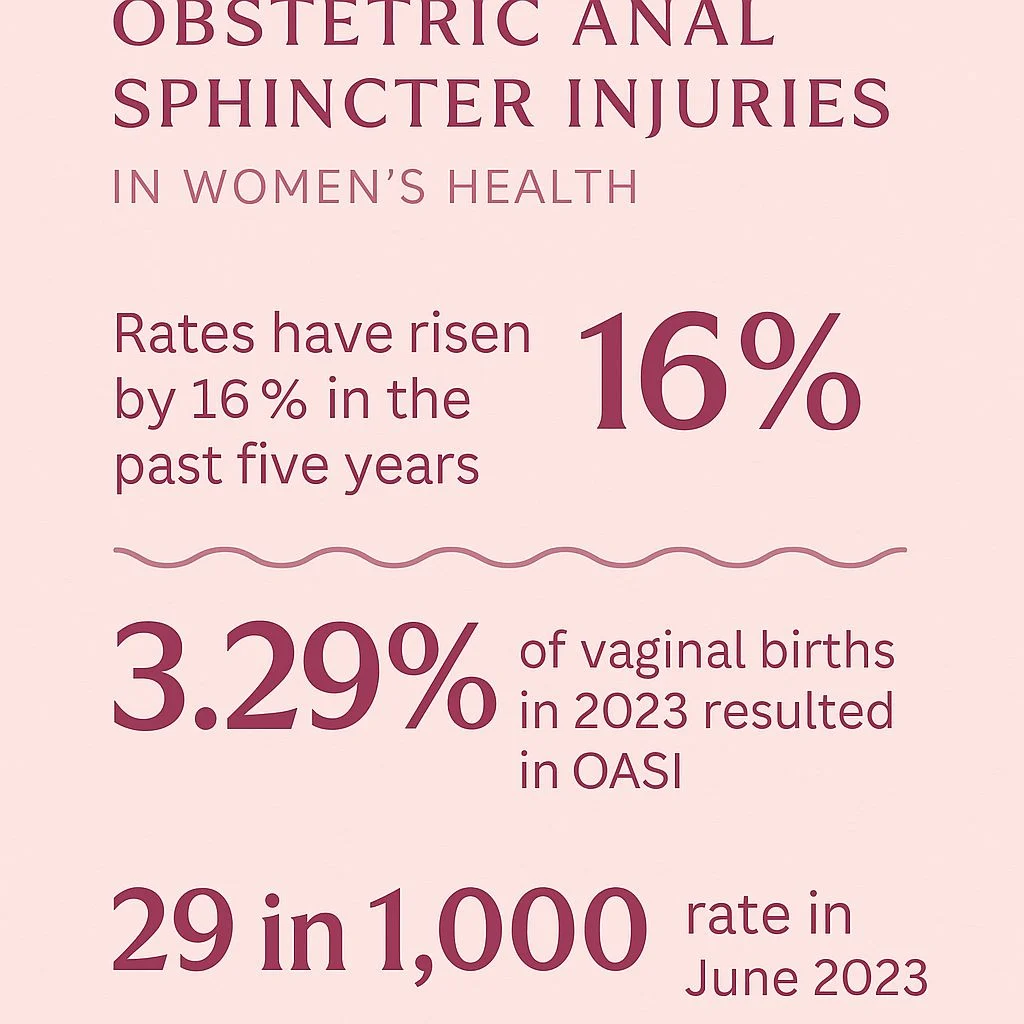
Emma Thornton: Third- and Fourth-Degree Perineal Tears Have Risen by 16%
Emma Thornton, General Practice Trainee at NHS, shared a post on LinkedIn:
“NHS data reported by The Guardian paints a worrying picture: Rates of third- and fourth-degree perineal tears have risen by 16% in the past five years (25 in 1,000 in June 2020 to 29 in 1,000 in June this year). The recent National Maternity and Perinatal Audit report found that 3.29% of women who gave birth vaginally in England, Scotland and Wales in 2023 suffered a third- or fourth-degree perineal tear.
Third and fourth degree tears are also know as ‘obstetric anal sphincter injuries’ due to their involvement of anal sphincter muscles
These injuries can cause a spectrum of potential physical and psychological effects, from incontinence to trauma and fear of future childbirth.
Despite evidence based protocols such as the RCOG OASI care bundle rates are increasing. Implementation remains inconsistent and staffing of maternity services are stretched. Qualitative feedback from the OASI Care Bundle evaluation reported that women felt they needed more information about perineal trauma (risk, prevention, recovery). This indicates a gap in antenatal education and awareness.
Poor identification and treatment of tears is also an issue and can lead to huge litigation costs. A systematic review in 2024 highlighted the lack of standardisation when it comes to follow up for patients suffering from third and fourth degree tears.
We urgently need:
- Consistent, evidence-based prevention and training
- A more open dialogue about birth injury and recovery
- Better postnatal support and integrated pathways to standardise follow up
- Innovation in this space – Really looking forward to catching up with Nina from Peripear on the podcast soon to hear about the tech they are developing in this area.
If you work in maternity, what solutions or support systems do you think could make the biggest impact?”

Stay updated on all scientific advances in the field of fertility with Fertility News.
-
Oct 11, 2025, 06:44The Global IVF Market Is Set to Reach $65B by 2032 – Meddilink
-
Nov 6, 2025, 12:13Marco Zaccaria: Next LejEndo Dives Into ICG Innovation in Surgery
-
Nov 6, 2025, 12:04Silvia Alvarez: Do Endometriosis or Adenomyosis Affect Oocyte Quality and Pregnancy Rates?
-
Nov 6, 2025, 11:59Mary Mulcahey: Culture Eats Strategy and Grit Fuels Growth
-
Nov 6, 2025, 11:46Connection Between Infertility Treatments and Stroke Risk – Reproduction and Fertility
-
Nov 6, 2025, 00:03Fertility and Sterility: Special Issue Explores Human Embryo Testing and Phased Validation
-
Nov 5, 2025, 23:51William Wallace: How Your Gut Microbes Help Set Your Body’s Internal Clock
-
Nov 5, 2025, 13:34Nibhash Kumar: When Embryos Stop Growing and the Hidden Reasons Behind Early Developmental Arrest
-
Nov 5, 2025, 13:29Ahsan Saeed: DNA From Three Parents Just Stopped a Life-Threatening Disorder Before Birth!
-
Nov 5, 2025, 13:24New Weighted Classification Criteria Refine Antiphospholipid Syndrome Research – Hæmatologi DK
